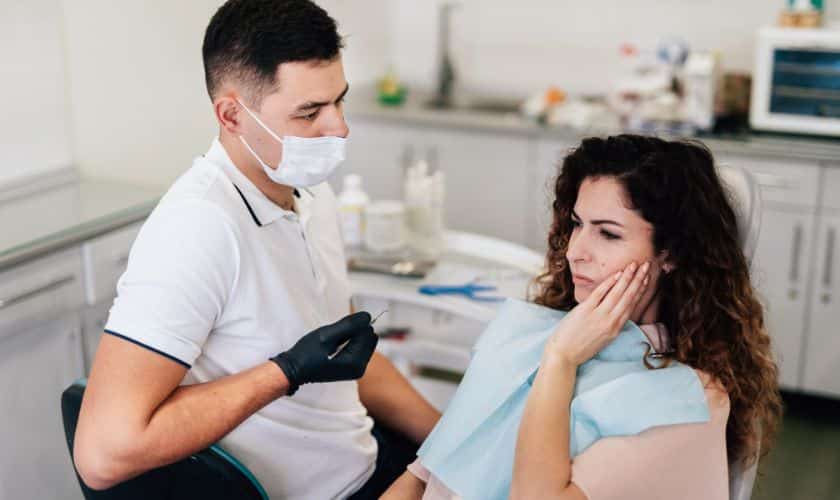Your oral health is an integral part of your overall well-being, and dental emergencies can happen when you least expect them. Understanding the symptoms of dental emergencies and knowing how to identify them is crucial for prompt and appropriate action. Dental emergencies encompass a range of issues, from severe toothaches to trauma or injuries affecting your mouth.
In this comprehensive guide, we will explore the various signs and symptoms that indicate a dental emergency. Armed with this knowledge, you’ll be better prepared to recognize when immediate dental care is needed, potentially preventing further complications and ensuring you get the help you require when faced with a dental crisis.
Common Dental Emergencies
1. Severe Toothache: Intense, persistent tooth pain can be a sign of an underlying issue such as an infection or a damaged tooth. Severe pain often necessitates immediate attention.
2. Dental Abscess: An abscess is a painful, pus-filled swelling in or around the tooth. It can indicate a serious infection that requires prompt treatment to prevent it from spreading.
3. Broken or Chipped Tooth: Accidents or trauma can result in a fractured or chipped tooth. This can expose sensitive nerves and require immediate dental care to prevent further damage.
4. Knocked-Out Tooth: A knocked-out (avulsed) tooth can often be saved if treated promptly. Keeping the tooth moist and seeking immediate dental care is crucial.
5. Lost Filling or Crown: When a dental filling or crown falls out, it leaves the underlying tooth vulnerable to damage and sensitivity. Timely replacement or repair is necessary.
6. Gum Bleeding and Swelling: Persistent gum bleeding or sudden swelling can indicate gum infections, abscesses, or other underlying issues. These symptoms require a dentist’s evaluation and treatment.
Recognizing these common dental emergencies and seeking prompt professional help can make a significant difference in preserving oral health and preventing further complications.
Recognizing Dental Emergency Symptoms
1. Intense Pain: Severe, unrelenting tooth pain, especially if it’s accompanied by swelling, could indicate an emergency. Pain that disrupts your daily activities is a clear sign that something is amiss.
2. Bleeding and Swelling: Any unusual bleeding or swelling in the gums, around a tooth, or in the jaw area should not be ignored. These symptoms can signal an underlying dental problem that requires immediate attention.
Being vigilant for these signs can help you identify dental emergencies early, enabling you to seek prompt treatment and prevent further complications.
What to Do in a Dental Emergency
1. Contact Your Dentist: Call your dentist’s office as soon as possible to explain the situation and seek guidance. Dentists often have emergency slots available to accommodate urgent cases. They can provide specific instructions and prepare for your visit.
2. Manage Pain and Bleeding: While waiting for dental care, you can manage pain with over-the-counter pain relievers (following package instructions) and apply a cold compress to reduce swelling. If there’s bleeding, gently rinse your mouth with warm water and apply gentle pressure with a clean cloth or gauze.
3. Preserve Knocked-Out Teeth: If a tooth gets knocked out, handle it by the crown (not the root) and rinse it gently with water if it’s dirty. Try to reinsert it into the socket, or keep it moist by placing it in a container with milk or saliva until you can get to the dentist. Time is critical for saving a knocked-out tooth.
Remember, in a dental emergency, it’s crucial to act quickly and seek professional care as soon as possible to minimize pain, prevent further damage, and promote the best possible outcome for your oral health.
Tips for Preventing Dental Emergencies
1. Regular Dental Check-Ups: Schedule and attend regular dental check-ups and cleanings, typically every six months. These visits help detect and address potential issues before they become emergencies, ensuring early intervention.
2. Use Protective Gear: If you’re engaged in contact sports or activities with a risk of dental injury, wear appropriate protective gear, such as a mouthguard. This can significantly reduce the chances of trauma-induced dental emergencies.
By following these tips, you can proactively reduce the risk of dental emergencies and maintain a healthy, confident smile.
Dental Emergency Kit
1. Gauze and Clean Cloth: Gauze pads are useful for managing bleeding in case of a dental injury. A clean cloth or handkerchief can also be helpful for applying pressure to stop bleeding.
2. Small Container with Lid: This container can be used to preserve a knocked-out tooth if it happens. Fill it with milk or saliva and keep it in the kit to ensure the tooth remains viable until you can seek professional help.
Having these items readily available in your dental emergency kit can make a significant difference in handling dental crises promptly and effectively.
Frequently Asked Questions
Here are two frequently asked questions (FAQs) related to dental emergencies:
1. Can I use over-the-counter pain relievers for dental pain?
– Yes, over-the-counter pain relievers like ibuprofen or acetaminophen can temporarily alleviate dental pain. Follow the recommended dosage instructions on the packaging. However, it’s crucial to seek professional dental care to address the underlying issue causing the pain.
2. What should I do if I lose a filling or crown?
– If you lose a filling or crown, contact your dentist as soon as possible to schedule an appointment for repair or replacement. In the meantime, avoid chewing on the affected side and keep the area clean to prevent further damage or sensitivity.
In conclusion, understanding dental emergency symptoms and knowing how to react is vital for maintaining oral health. Quick action, proper first aid, and seeking emergency dentistry can make a substantial difference in preventing further complications and preserving your smile. Prioritizing dental health is key to long-term well-being.




